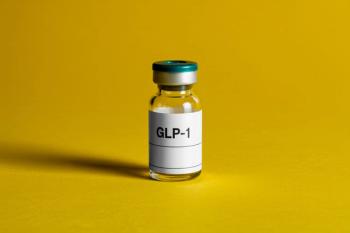
- Psychiatric Times Vol 24 No 7
- Volume 24
- Issue 7
Long-Term Treatment of Posttraumatic Stress Disorder
Posttraumatic stress disorder (PTSD) is an anxiety disorder that occurs after severe psychological stress, eg, assault, combat, natural disasters, terrorism, or other stressors.
Posttraumatic stress disorder (PTSD) is an anxiety disorder that occurs after severe psychological stress, eg, assault, combat, natural disasters, terrorism, or other stressors. The stressor induces intense fear or helplessness in the patient. Three symptom clusters are included in DSM-IV criteria for PTSD: re-experiencing the traumatic event, avoidance of reminders of the event and psychological numbing, and hyperarousal symptoms.
Re-experiencing symptoms may include intrusive memories of the trauma, nightmares, sudden acting or feeling as if the trauma were recurring, and psychological or physiological reactivity on exposure to reminders of the trauma. Avoidance symptoms may include avoidance of people, places, or situations that remind the individual of the traumatic event: psychological numbing, feelings of detachment from others, and a sense of a foreshortened future. Hyperarousal symptoms may include irritability, insomnia, difficulty concentrating, exaggerated startle responses, and hypervigilance. By definition, these symptoms should be present for at least 1 month after the trauma. Shorter duration of symptoms may be consistent with acute stress disorder.
Chronic PTSD potentially leads to significant disability with impairment in social and occupational function. The estimated lifetime prevalence of PTSD is about 7% to 8% in the United States.1 Two SSRIs are currently FDA-approved for the treatment of PTSD: sertraline and paroxetine. Both antidepressants demonstrated efficacy and tolerability in most of the regulatory trials. In fact, most antidepressants, including the tricyclics, monoamine oxidase inhibitors, other SSRIs, serotonin/norepinephrine reuptake inhibitors (SNRIs), and atypical antidepressants such as mirtazapine, have demonstrated efficacy at least in open-label studies.2
Given the heterogeneity of PTSD symptoms, as well as the potential for comorbidity (Figure), a number of other classes of psychotropics have been used alone or in combination with antidepressants. These include anticonvulsants, putative mood stabilizers, adrenergic blockers, anxiolytic medications, and second-generation antipsychotics.
The customary treatment of PTSD involves a combination of psychosocial interventions with medication management. Psychosocial therapy may include group therapy, education, supportive therapy, family therapy, and cognitive-behavioral psychotherapy (CBT) or prolonged exposure therapy (PE). To date, CBT or PE appear to be the most effective forms of psychotherapy for patients with PTSD. These modalities may be delivered either in group or individual settings.
Long-term treatment
To my knowledge, there is no commonly accepted definition of long-term treatment in PTSD. A duration of at least 3 months is a DSM-IV criterion for chronic PTSD. For the purposes of this article, treatment studies that exceeded 12 weeks were included.
Davis and colleagues2 have recently reviewed the literature on long-term pharmacological therapy of PTSD. This article summarizes those studies as well as some more recently published trials. Psychotherapeutic interventions alone or in combination with medication are also discussed.
Antidepressants
Davidson and colleagues3 assessed the efficacy of sertraline compared with placebo in 96 patients who had completed a 12-week double-blind, placebo-controlled trial followed by a 24-week open-label treatment-continuation period. The study length was 28 weeks, and dosages of sertraline were flexible in the range of 50 to 200 mg daily. Forty-six patients were randomly selected to receive sertraline (78% were women) and 50 to receive placebo (62% were women).
Outcome measures included the Clinician-Administered PTSD Scale (CAPS), the Impact of Events Scale, and the Clinical Global Impression severity and improvement scales. Outcome parameters included rate of relapse and discontinuation because of clinical deterioration.
There were lower PTSD relapse rates in the group that received sertraline (5%) than in the placebo group (26%). Those in the placebo group were more than 6 times as likely to relapse as those receiving sertraline. All 3 PTSD symptom clusters remained improved in patients who did not relapse, and Kaplan-Meier analyses were consistent with an extended time in remission for the sertraline group.
Early response to treatment greatly reduced the risk for relapse in the placebo group. The mean dosage of 137 mg of sertraline daily was well tolerated. This study suggests that sertraline was helpful in the long-term prevention of relapse in patients with PTSD.
Rapaport and colleagues4 assessed quality of life (QOL) variables in patients with PTSD who were treated with sertraline over a 64-week treatment period. These data were derived from the study by Davidson and colleagues.3 Primary assessments included the Quality of Life Enjoyment and Satisfaction Questionaire (Q-LES-Q), emotional role functioning and mental health subscales of the Medical Outcomes Study 36-Item Short Form Survey, and occupational and social function items from the CAPS. At the end of the acute (12-week) treatment phase, 58% of sertraline responders had improvement in QOL measures (ie, had obtained a Q-LES-Q score within 20% of community norms). Compared with baseline, 24 weeks of continuation treatment resulted in an additional 10% improvement in QOL measures. Double-blind discontinuation of sertraline resulted in worsening QOL measures. These data support the notion that continuation and maintenance treatment with sertraline may not only improve symptoms of PTSD and prevent relapse but may also improve associated occupational and social impairment and quality of life.
A recent 12-week controlled trial comprising 538 patients with chronic PTSD (symptoms for more than 6 months) and a CAPS score greater than 60, evaluated venlafaxine extended release (ER) versus sertraline and placebo.5 Patients were randomized to venlafaxine ER in a flexible dosage range of 37.5 mg to 300 mg daily, 25 to 200 mg of sertraline daily, or placebo. A total of 350 patients (66%) completed the study. The mean decrease in CAPS scores (the primary outcome measure) was 41.8 for patients treated with venlafaxine ER, 39.4 for sertraline, and 33.9 for placebo (P < .05). The mean decrease in sertraline scores was comparable statistically to that seen with venlafaxine ER and significantly greater than the decrease in patients receiving placebo.
In a 6-month, double-blind, placebo-controlled multicenter, international study at 56 sites, patients (N = 329) meeting DSM-IV criteria for PTSD were randomized to receive either venlafaxine ER or placebo.6 Dosing was flexible based on side-effect profile and clinical response with a dosage range of 37.5 to 300 mg of venlafaxine ER daily or matching placebo for a treatment period of 24 weeks. The primary efficacy variable was the CAPS.
Mean change from baseline in the CAPS was a decrease of 51.7 for venlafaxine ER and 43.9 for the placebo group (Table 1). Remission rates, defined as a CAPS score of 20 or less, were significantly higher for the venlafaxine ER group versus placebo. Venlafaxine ER also demonstrated significantly greater improvement in re-experiencing (P = .008) and avoidance symptoms (P = .006) but not in hyperarousal symptoms. Improvement in other outcome measures was also greater in the venlafaxine group versus the placebo group. These data provide further evidence for the long-term efficacy of an SNRI for the treatment of PTSD.
A trial with paroxetine investigated long-term treatment in patients with PTSD.7 The primary objective of the open-label study was to investigate changes in hippocampal volume and declarative memory during a 9- to 12-month treatment period. Patients who completed a double-blind treatment phase were given up to 50 mg daily of paroxetine in a flexible dose schedule based on response. Twenty-three patients completed the full course of treatment and had neuropsychological testing. Twenty patients underwent MRI to assess hippocampal volume. There was a 4.6% increase in mean hippocampal volume and a significant improvement in declarative memory. Paroxetine treatment resulted in a mean reduction of 54% in PTSD symptoms as measured by the CAPS. There was no correlation between changes in CAPS scores and hippocampal volume or memory scores.
In another trial with an antidepressant, Martenyi and colleagues8 assessed the efficacy and tolerability of fluoxetine versus placebo in preventing relapse in patients with PTSD. Following a 12-week double-blind, placebo-controlled acute treatment phase, responders were randomized to receive 24 weeks of treatment with fluoxetine (n = 69) or placebo (n = 62). The primary outcome variable was time to relapse. Patients who received fluoxetine in the acute phase were less likely to relapse than patients who received placebo (P = .027). Fluoxetine was well tolerated. This study supports the longer term efficacy of this SSRI in the prevention of relapse and also suggests that responders to active medication are more likely to be responsive in continuation treatment than responders to placebo.
Perhaps the longest follow-up study has been conducted by Hertzberg and colleagues.9 These investigators assessed patients with chronic PTSD (n = 10) 3 to 4 years after they had participated in a 12-week open trial of nefazodone. The dosage of nefazodone was increased to a range of 400 to 600 mg daily from a starting dosage of 100 mg daily. Nine of the 10 patients reported that the nefazodone was effective for them and wanted to continue with the treatment. The majority of patients continued to have decreased PTSD symptoms at the 3- to 4-year follow-up, with 7 of 10 much improved, 2 minimally improved, and 1 with worse symptoms compared with baseline assessments. Caution is warranted in light of recent findings of hepatoxicity with nefaz-odone. With this in mind, this study suggests that much longer maintenance treatment may continue to be beneficial in PTSD.
Kim and colleagues10 assessed the effectiveness of 24 weeks of continuation treatment with mirtazapine after participation in an 8-week open-label trial. Of the 15 patients who had completed the 8-week study, 12 patients completed the continuation trial . On measures of PTSD symptom severity, there was improvement from baseline to week 24. Mirtazapine was well tolerated with no serious adverse effects reported.
Antidepressants and/or psychotherapy
Rothbaum and colleagues11 studied augmentation of sertraline with PE. Patients with PTSD were treated with sertraline for 10 weeks and then randomly selected to receive an additional 5 weeks of sertraline for a total of 15 weeks of treatment. Patients who had at least a 20% reduction in PTSD symptom severity were assigned to the second phase of the study. These patients were treated with sertraline alone (n = 31) or sertraline plus PE twice weekly (n = 34). Most of the participants were women (85%) who had suffered non- combat-related trauma including sexual and nonsexual assault, death of a close relative or friend, motor vehicle accident, or other trauma. Outcome measures using the Structured Interview for PTSD showed that sertraline treatment during the first 10 weeks resulted in a significant reduction in symptom severity, but there was no change in symptom severity after an additional 5 weeks of sertraline treatment (Table 2). In contrast, the patients who received PE augmentation had a further reduction in symptoms. This occurred only in patients who originally had a partial response to sertraline.
Another study investigating long-term maintenance of PTSD with psychotherapy compared short-term and long-term efficacy of fluoxetine, psychotherapy (eye movement desensitization and reprocessing [EMDR]), and placebo.12 Eighty-eight participants were randomly assigned to receive fluoxetine, EMDR, or placebo over an 8-week treatment phase. They were blindly assessed after an additional 6 months of treatment using the CAPS as the primary outcome variable. EMDR was more effective than fluoxetine or placebo in adult-onset trauma victims at 6-month follow-up. This compared with a 33% reduction in patients with childhood-onset trauma who received EMDR. There was also symptom reduction in the patients with adult-onset trauma who received fluoxetine.
An earlier study investigated the ability of CBT to prevent the development of chronic PTSD in civilian trauma victims.13 The types of trauma included nonsexual assault and motor vehicle accidents. Most patients at baseline met criteria for acute stress disorder. The investigators assessed 45 patients who were given 5 sessions of PE (n = 14), combined PE and anxiety management (n = 15), or supportive therapy (n = 16). Forty-one patients were assessed at a 6-month follow-up appointment. There was a reduction in the number of patients meeting diagnostic criteria for PTSD in those who had received PE (2 out of 14), and PE plus anxiety management (3 out of 15) compared with supportive therapy alone (10 out of 15) at the 6-month assessment. This study supports the notion that early intervention with CBT, and in particular PE, may mitigate the long-term effects of trauma.
Anticonvulsants
Case reports and small open trials support the notion that γ-aminobutyric acid (GABA) mechanisms may be involved in PTSD. However, only one published study has addressed long-term treatment with an anticonvulsant agent, tiagabine, which is a selective GABA reuptake inhibitor. A 12-week open-label trial was conducted in 29 patients with PTSD.14 Treatment responders were randomized to double-blind, placebo-controlled treatment. In the 19 patients who completed open-label treatment, significant improvement (P < .05) was seen in all outcome measures; 18 patients with at least minimal improvement were entered into the 24-week randomized phase. The mean dosage of tiagabine at the end of the randomized phase was 10.8 mg daily. The group treated with tiagabine was more likely to achieve remission than the placebo group (P < .08). There was no difference in relapse rates between groups. Tiagabine was well tolerated. The authors noted that larger controlled trials are needed for GABAergic agents including tiagabine in PTSD.
Atypical antipsychotics
Acute studies have supported a possible role for atypical antipsychotics, in particular for treatment-refractory PTSD or in patients with comorbid psychosis. A restrospective review of childhood trauma victims (n = 6) with chronic PTSD and psychotic symptoms suggested that clozapine was effective in reducing psychiatric symptoms in 4 of 6 of the adolescents during a 6-month treatment period.15 Five of the patients also had a reduction in psychotic (hallucinatory) symptoms.
One long-term study of risperidone for combat-related chronic PTSD was conducted by Bartzokis and colleagues.16 This was a single-site, double-blind, placebo-controlled trial (n = 73) that included a 5-week residential phase and a 3-month outpatient follow-up phase. The primary outcome measure was the CAPS score with a number of secondary efficacy and safety measures. Sixty-five patients were randomized and 48 completed the study. There was significant improvement in patients treated with risperidone versus the placebo group on the total CAPS scores and also on the CAPS hyperarousal subscale scores. Most patients were titrated to 3 mg of risperidone daily with 2 patients receiving 2 mg. Risperidone was well-tolerated. This was an adjunctive study with other medications held constant.
Antiadrenergics, benzodiazepines, and other agents
Although early acute studies with antiadrenergics, in particular the α1-antagonist prazosin, have been promising. To this author's knowledge there have been no long-term studies with these or other agents such as the benzodiazepines or buspirone. Raskind and colleagues17 studied prazosin in a 20-week, double-blind, crossover study that was promising in demonstrating a reduction in sleep disturbances and other PTSD symptoms; however, actual active treatment time was 10 weeks.
CONCLUSION
Long-term studies, in particular with antidepressants or antidepressants combined with psychotherapy, show promise in the continuation and maintenance phases of treatment for chronic PTSD. It is evident from both acute and long-term studies that although PTSD may respond to a variety of treatment interventions, at the end of the trials many patients still have significant symptom burden.18 More studies are needed to investigate combination medication and psychosocial treatment interventions. Moreover, there are limited data on the effectiveness of other classes of psychotropics, especially for continuation or maintenance treatment. At this point, it is reasonable to continue to give patients with chronic PTSD an SSRI or SNRI antidepressant if they have responded to acute-phase treatment. Ideally, the antidepressant should be combined with some form of CBT.
References:
References
1.
Kessler RC, Sonnega A, Bromet E, et al. Posttraumatic stress disorder in the National Comorbidity Survey.
Arch Gen Psychiatry
. 1995;52:1048-1060.
2.
Davis LL, Frazier EC, Williford RB, Newell JM. Long-term pharmacotherapy for post-traumatic stress disorder.
CNS Drugs
. 2006;20:465-476.
3.
Davidson J, Pearlstein T, Londborg P, et al. Efficacy of sertraline in preventing relapse of posttraumatic stress disorder: results of a 28-week double-blind study.
Am J Psychiatry
. 2001;158:1974-1981.
4.
Rapaport MH, Endicott J, Clary CM. Posttraumatic stress disorder and quality of life: results across 64 weeks of sertraline treatment.
J Clin Psychiatry
. 2002; 63:59-65.
5.
Davidson J, Rothbaum BO, Tucker P, et al. Venlafaxine extended release in posttraumatic stress disorder: a setraline- and placebo-controlled study [published correction appears in
J Clin Psychopharmacol.
2006;26:473. Dosage error in text].
J Clin Psychopharmacol
. 2006; 26:259-267.
6.
Davidson J, Baldwin D, Stein DJ, et al. Treatment of posttraumatic stress disorder with venlafaxine extended release: a 6-month randomized controlled trial.
Arch Gen Psychiatry
. 2006;63:1158-1165.
7.
Vermetten E, Vythilingam M, Southwick SM, et al. Long-term treatment with paroxetine increases verbal declarative memory and hippocampal volume in posttraumatic stress disorder.
Biol Psychiatry
. 2003;54: 693-702.
8.
Martenyi F, Brown EB, Zhang H, et al. Fluoxetine v. placebo in prevention of relapse in posttraumatic stress disorder.
Br J Psychiatry
. 2002;181:315-320.
9.
Hertzberg MA, Feldman ME, Beckman JC, et al. Three- to four-year follow-up to an open trial of nefazodone for combat-related posttraumatic stress disorder.
Ann Clin Psychiatry
. 2002;14:215-221.
10.
Kim W, Pae CU, Chae JH, et al. The effectiveness of mirtazapine in the treatment of posttraumatic stress disorder: a 24-week continuation therapy.
Psychiatry Clin Neurosci
. 2005;59:743-747.
11.
Rothbaum BO, Cahill SP, Foa EB, et al. Augmentation of sertraline with prolonged exposure in the treatment of posttraumatic stress disorder.
J Trauma Stress
. 2006; 19:625-638.
12.
van der Kolk BA, Spinazzola J, Blaustein ME, et al. A randomized clinical trial of eye movement desensitization and reprocessing (EMDR), fluoxetine and pill placebo in the treatment of posttraumatic stress disorder: treatment effects and long-term maintenance.
J Clin Psychiatry
. 2007;68:37-46.
13.
Bryant RA, Sackville T, Dang ST, et al. Treating acute stress disorder: an evaluation of cognitive behavior therapy and supportive counseling techniques.
Am J Psychiatry
. 1999;156:1780-1786
14.
Connor KM, Davidson JR, Weisler RH, et al. Tiagabine for posttraumatic stress disorder: effects of open-label and discontinuation treatment.
Psychopharmacology
. 2006;184:21-25.
15.
Wheatley M, Plant J, Reader H, et al. Clozapine treatment of adolescents with posttraumatic stress disorder and psychotic symptoms.
J Clin Psychopharmacol
. 2004; 24:167-173.
16.
Bartzokis G, Lu PH, Turner J, et al. Adjunctive risperidone in the treatment of chronic combat-related posttraumatic stress disorder.
Biol Psychiatry
. 2005;57: 474-479.
17.
Raskind MA, Peskind ER, Hoff DJ, et al. A parallel group placebo controlled study of prazosin for trauma nightmares and sleep disturbance in combat veterans with post-traumatic stress disorder.
Biol Psychiatry
. 2007;61:928-934.
18.
Hamner MB, Robert S, Frueh BC. Treatment-resistant posttraumatic stress disorder: strategies for intervention.
CNS Spectr
. 2004;10:740-752.
Articles in this issue
over 18 years ago
Risk Versus Benefit of Benzodiazepinesover 18 years ago
Schizophrenia Research Congress Highlightsover 18 years ago
The Casebook of a Residential Care Psychiatristover 18 years ago
Child and Adolescent Psychiatryover 18 years ago
Peoniesover 18 years ago
Prodromal Schizophrenia in Adolescents: Role for Antidepressants?over 18 years ago
Persons With Substance Use Disorders Unlikely to Seek Treatmentover 18 years ago
FDA Adds Young Adults to Black Box Warnings on Antidepressantsover 18 years ago
Posttraumatic Stress Disorder in All Its ManifestationsNewsletter
Receive trusted psychiatric news, expert analysis, and clinical insights — subscribe today to support your practice and your patients.




